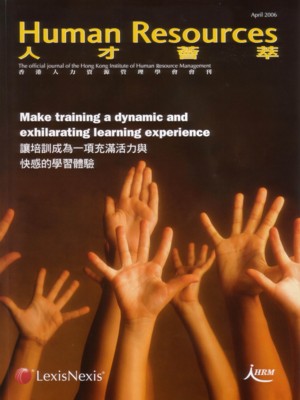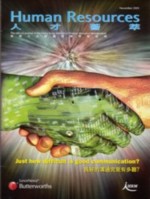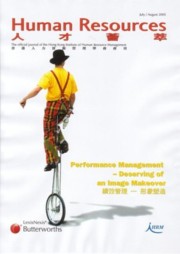


Testimonials-click here
News Reports- click here
Make training a dynamic exhilarating learning experience - Ian Newgreen
Have you been to the new Hong Kong Disneyland? It's an experience I can vividly recall.
I was attracted to the 3D animated movie featuring a number of Disney characters led by Donald Duck and Mickey Mouse.
Visual and audio stimuli created a sense of excitement as I waited in the theatre foyer; the 3D glasses I held in my hand set high expectations for what I was about to experience.
Shooting a movie in 3D gives the viewer a sense of depth; the senses of the audience were bombarded as characters and props zoomed out and around us. We were covered with a fine mist of water and the aroma of freshly baked bread wafted through the theatre.
I was totally engaged. It was not about the characters in isolation but a shared exhilarating experience.
Effective training is training that is totally engaging. It's through involvement in the process and the process of involvement (an exhilarating shared experience), that learning is achieved.
The term 'experiential training' describes training in which the trainer facilitates the learning process through involving the participants in specifically designed activities; participants 'experience' the joy of learning through the 5 senses (touch, smell, sight, sound and taste) practising and rehearsing the introduced skills and behaviours.
Experiential training methods have been shown to reinforce the participants' long term retention of the learning; generating and promoting workplace skill application.
Effective experiential training requires strong planning and preparation. It is not about activity upon activity but training that energetically promotes and recognises the learners' input into the learning process, balances participants' needs with those of the workplace and is totally focussed on achieving objectives.
I offer three questions for consideration when planning and preparing an experiential training program:
1. Who are the participants?
2. What do the participants need to learn?
3. How will the learning be delivered to the participants?
Each question impacts one upon the other and each evokes advice to DO and not to do (DON'T).
(for a copy of the full published article please contact us)
The official journal of the Hong Kong Institute of
Human Resource Management April 2006
Published by LexisNexis Butterworths (a division of Reed Elsevier (Greater
China) Ltd)
Meetings that WORK - Ian Newgreen
Christine Yuan, IT Manager, is about to attend a scheduled managers'
meeting. The meeting has been time-framed. Christine has set aside the
time, knows where and when the meeting will take place, who will attend,
and has been informed of the meeting structure and the objectives to be
achieved. Christine has had input into the agenda, is fully conversant
with her role within the meeting, and has prepared accordingly. Christine's
past experiences of management meetings suggest to her that they are valuable
and stimulating interactions in which decisions are made, action responsibilities
allocated, objectives achieved and all within the time allocated.
Reflection
How do you think Christine feels?
Why does Christine feel the way she does?
What is the likely culture of the organisation?
Meetings are an integral part of day to day business and must be seen as a 'part of work', not as taking people away from work. Whether meetings are one-on-one client, management or team, they must satisfy the needs of those who attend and achieve the stated meeting objectives.
A meeting that satisfies needs and achieves objectives, is a valuable investment in the profitability of the organisation and positively impacts on the organisational culture.
Over several years, I have been conducting training programs to significantly
improve the 'process' and the 'result' of meetings.
I have accumulated many examples of situations where meetings do not satisfy
needs or achieve objectives. In other words they do 'not work'.
The following is a selection of the statements that professionals have made when asked to comment on the problems they face in the meetings they conduct and/or attend:
difficult to give a new idea instantly
one person dominates, others defer, how do you reach a balanced input
unable to get to the issue at hand, keep group focussed and motivated
people who don't support the outcomes
participants feeling that they are not important to the meeting
too many different ideas
These problems cover a cross section of meeting issues such as planning, facilitation, performing and evaluating.
At the outset it must be stated that meetings should only occur if it
is the best option available in order to achieve the objectives. If face-to-face
interaction is important in the process, then a meeting it is!
(for a copy of the full published article please contact us)
The official journal of the Hong Kong Institute of
Human Resource Management November 2005
Published by LexisNexis Butterworths (a division of Reed Elsevier (Greater
China) Ltd)
Performance Management - Deserving of an Image Makeover
- Judy Newgreen
"So much of my time is being taken up with performance issues. I need to be able to get on with some real work." Pauline Chan, Manager.
"I'm so worried about discussing my performance. I've got no idea what I'm meant to do and what I will say if I'm asked about losing that customer account early in the year." Stephen Lee, Staff person.
The trials and tribulations of managing performance?
Whether you are able to empathise with Pauline Chan and Stephen Lee or not, their comments are representative of real points of view on performance management and a tool of the system - performance appraisal.
An image problem
Performance management suffers an image problem in many organisations as management and staff have difficulty in understanding what it is and how it 'works', struggle with the processes of performance appraisal and fail to appreciate the benefits of an effective system.
What's in a name? 'Performance Management' is a common organisational term which I describe as 'chunky' because it represents many different systems and processes across organisations. Without a common understanding, the term in itself causes confusion and discord which I believe has contributed to giving performance management a poor image.
Furthermore, performance appraisal is sometimes wrongly interpreted as
an alternative name synonymous with performance management, bringing about
confusion between what is a tool of the system, with the system itself.
In an effort to clarify and unify meaning and in so doing improve its
image, many organisations have re-named their performance management systems
to include performance appraisal terminology: Staff Development System,
Performance Review and Enhancement Program, and Performance and Development
Review, to name a few.
However, name changes alone don't 'put a positive spin on a system'. In fact significant process changes or even total system re-structures have often failed to lift the image of performance management.
This is not to say that there are not some excellent performance management systems operating, that are exerting a positive impact on people and productivity. I believe that significant to a positive image is the clear definition and communication of 'what it is and how it works'!
(for a copy of the full published article please contact us)
The official journal of the Hong Kong Institute of
Human Resource Management July/August 2005
Published by LexisNexis Butterworths (a division of Reed Elsevier (Greater
China) Ltd)
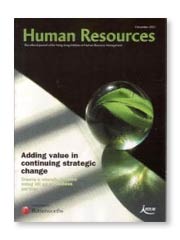
Creativity: The little picture – Ian Newgreen
Have U moved a chair lately - really moved it!
Have U sat on top of your office desk to work - really worked!
Have U explored a room - really explored it!
Have U initiated a conversation with a stranger in an elevator - really
conversed!
Your answers are important.
The catchcry of the business world today is innovation. To be innovative is to be creative, to seek out different and better ways to produce a product, to provide a service, be more effective, be more efficient and to be ……………………………… (whatever U would like to write).
To accomplish such aspirations we sometimes incorrectly focus on the
‘big picture’ to the exclusion of the ‘little picture’.
To be innovative begins at the beginning. One change can be so powerful
as to make the difference between ultimate success and failure, growth
and decline, creation and destruction.
The Xciting fact is that we can all be creative. Small changes are the
leveraging point into being innovative. Stepping out to be different and
thinking differently is liberating, stimulating and FANTASTIC fun.
The empirical evidence I have acquired, whilst conducting thought provoking, challenging, totally outcome focussed training courses for business organizations, is that no matter who the person is or what their role, they will learn and acquire new practical workplace skills when having FUN - just like children do.
The well-known saying that ‘adults are just children in big bodies’ is without doubt so true.
As I observe training program attendees participating in the drawing of a masterpiece, using a rope to tie a session together, utilizing a piece of fruit to describe themselves and their job function, becoming parts of a human machine, I witness a truly magical experience - people being creative………"
(for a copy of the full published article please contact us)
The official journal of the Hong Kong Institute of
Human Resource Management December 2002
Published by LexisNexis Butterworths (a division of Reed Elsevier (Greater
China) Ltd)
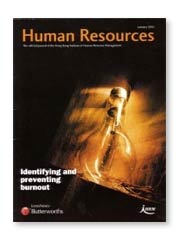
Get the balance - Judy Newgreen
Are you prepared to take on a challenge? You are? It won’t be easy!
To succeed you must:
| - | be totally honest with yourself |
| - | question your beliefs and those of others |
| - | listen to learn something ‘you don’t know’ |
| - | identify your personal and professional values and search relentlessly to discover new ways of thinking |
If you’re ready……here we go!
As we move in a global marketplace forging our way into the 21st century our lives have never been busier. The demands on our time are omnipresent as we daily strive to meet workplace targets and project deadlines, conduct and attend meetings, manage people, catch flights and focus on a multitude of issues that require short term and long term strategies and solutions.
Now let’s add to that, time spent focussing on self-fulfilment and professional development; being innovative, proactive, a motivator of others, a mentor and a coach.
And again, let’s add to that, our need to spend quality time with friends and family, have time alone, be a husband, wife, partner, parent, son, daughter and friend, go to the gym, play golf……
You may be able to add to the list of demands on your time and the above is not intended to be prioritised in any way. The implication is that living life to the fullest can be testing and to consider and reflect on the choices you have made, the patterns of behaviour you have developed, is the challenge that this article sets for you.
You may be familiar with the term Work/Life Balance. This article will discuss possible ways to define work and life balance, present some common trends of thinking that I have encountered in my research on the topic, and provide a 5-point approach to evaluating and committing to a work and life balance……
(for a copy of the full published article please contact us)
The official journal of the Hong Kong Institute of Human
Resource Management January 2003
Published by LexisNexis Butterworths (a division of Reed Elsevier (Greater
China) Ltd)

Grab them with your Professional Presentation - Ian Newgreen
“I would rather die than stand up in front of a group of people and speak”.
By implication – “I would rather be in the coffin than presenting the eulogy”.
So why do people make such statements? Their reasons are many and reflect genuine concerns.
My experience suggests that people become so fixated on ‘what’ they are going to say to the exclusion of ‘how’ they are going to say it.
People are employed for their knowledge and expertise, both attributes acquired through the process of study and practical ‘hands on’ workplace application.
The same applies to learning the skills of presenting.
Myth
Having subject knowledge means you know how to impart information
to an audience of one or more people
Reality
A different skill set is needed to effectively engage your audience
and transfer information
Myth
The subject matter is boring and so the presentation will be
boring
Reality
No subject is boring - it is how the information is presented
that makes the difference
‘Winning Presentations - the Edge’, a PRIORITY ONE TRAINING, training program asks the attendees to write on flipcharts, ‘WHAT GRABS ME’ and ‘WHAT TURNS ME OFF’, when they attend a presentation.
Overwhelmingly the comments relate to the ‘HOW’ the subject matter is delivered, yet most people attend a presentation because of the subject……
(for a copy of the full published article please contact us)
The official journal of the Hong Kong Institute of Human
Resource Management March 2004
Published by LexisNexis Butterworths (a division of Reed Elsevier (Greater
China) Ltd)
Published Articles
News Reports
